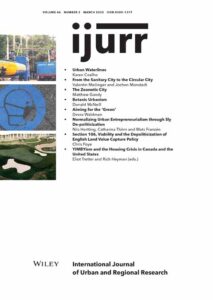This article follows the flow of wastewater in Los Angeles, California, from upstream treatment plants to the Pacific Ocean, to explore struggles over reconfigurations of urban wastewater flows for new policy ambitions in recycling and reuse. We show how ambitious infrastructure visions of circular urban resource management have gained force since California’s most recent drought (2011−17) but clash with incumbent gravity-fed water and sewer systems, political economy and urban geographies. Engineers navigate these path dependencies through incremental technical improvements of existing infrastructures to increase wastewater recycling. These interventions largely reproduce given infrastructure configurations and urban geographies of water and wastewater while marginalizing other voices in struggles over water circularity and stymying critical debate about more progressive change. We argue that novel infrastructural practices are deeply political and normative and can be explained by four dimensions of the ‘technopolitics’ of wastewater restructuring in Los Angeles: materiality and inherited topologies of infrastructures; circularity discourses; entrenched knowledge cultures; and institutional orders of infrastructure management and public control mechanisms of infrastructure investments and tariffs. We conclude by discussing how these four dimensions of an emerging technopolitical regime of wastewater recycling expand concepts of power that explain urban metabolic change.
Details
Written by:
Valentin Meilinger & Jochen Monstadt
Digital Object Identifier (DOI)
10.1111/1468-2427.13014
About DOI

